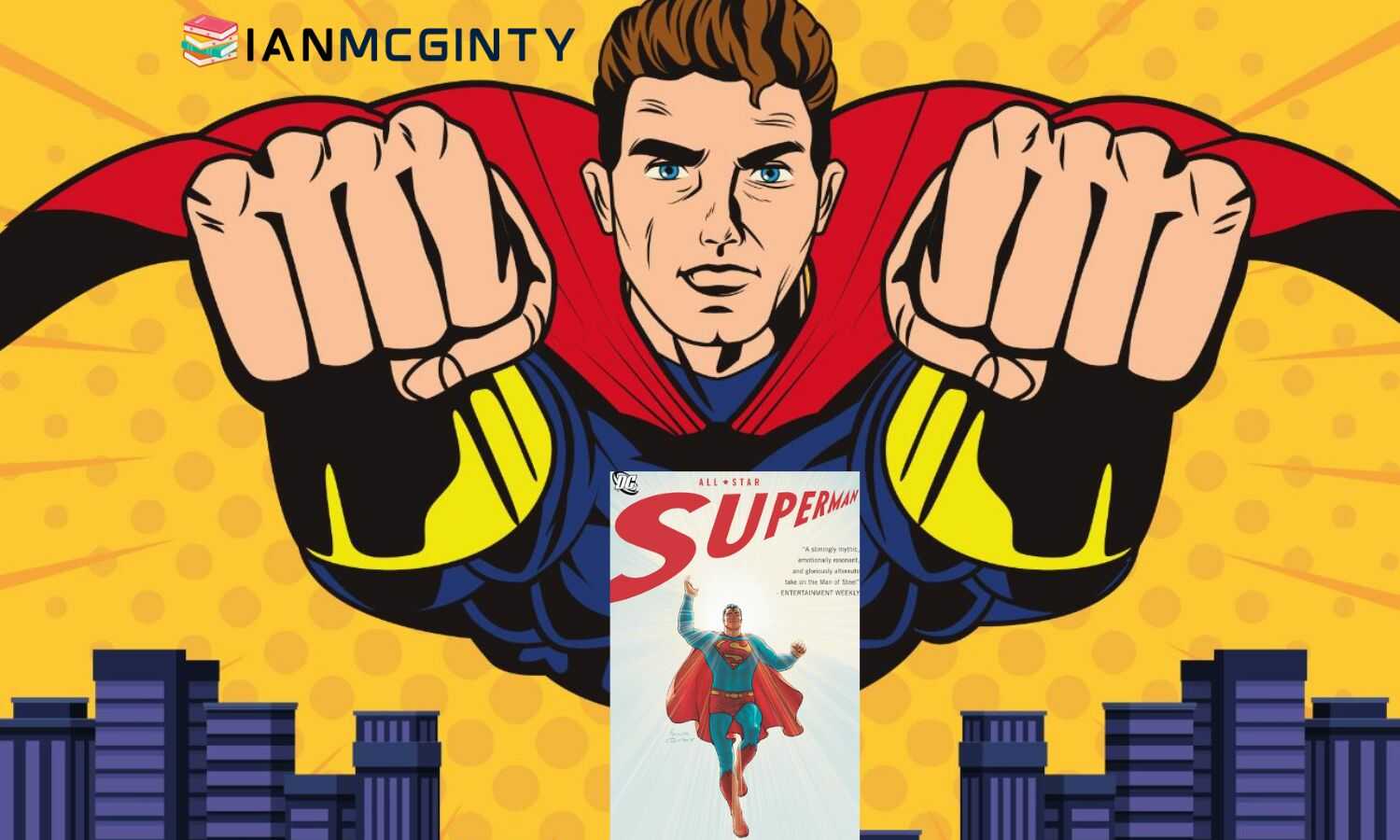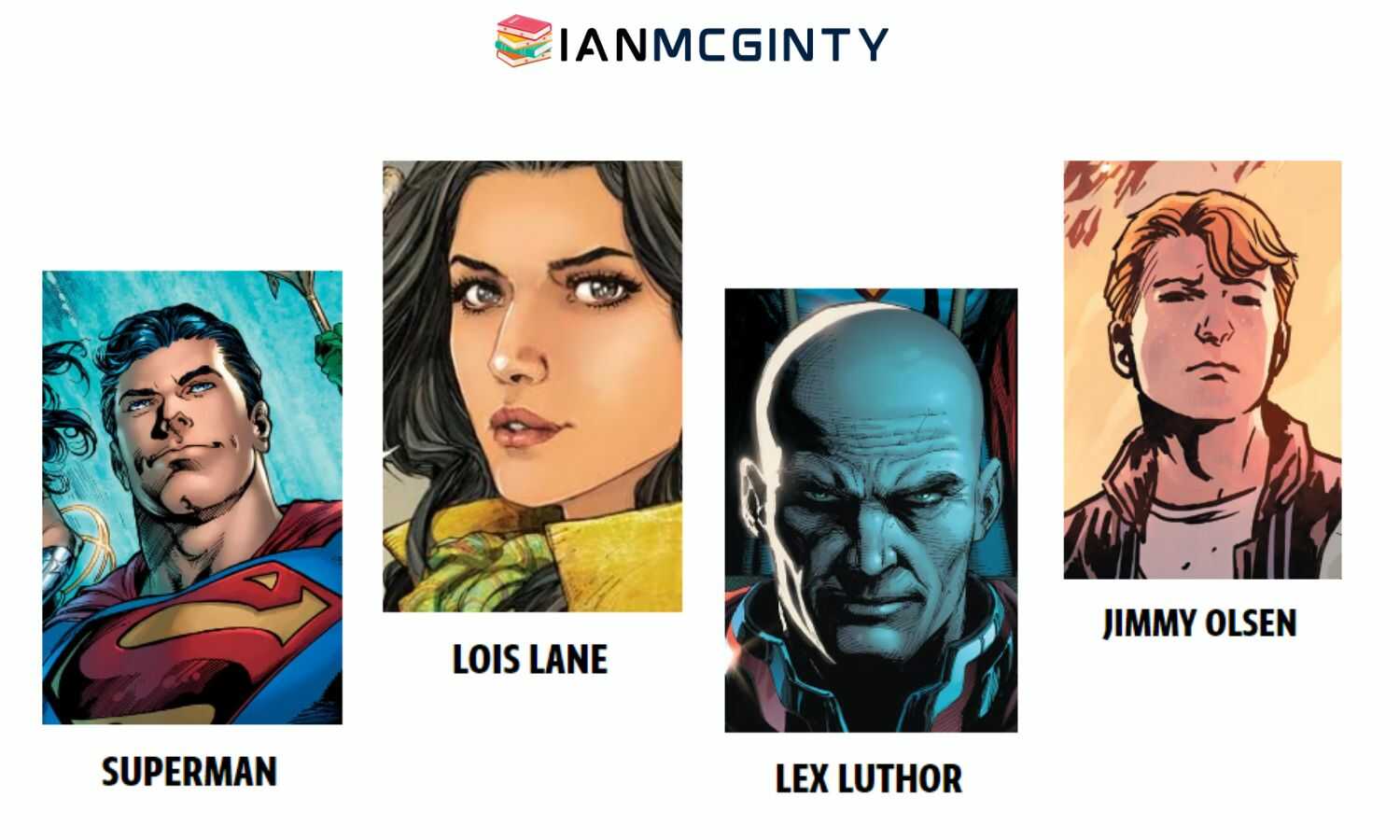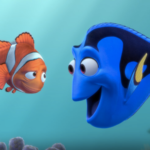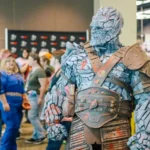
All-Star Superman is a comic series featuring Superman and other characters from DC Comics. Created by writer Grant Morrison and artist Frank Quitely, All-Star Superman was published by DC Comics in twelve issues between 2005 and 2008 before later being compiled into a single trade paperback.
You have to look into this: What Does ‘DC’ in DC Comics Stand For?
Widely considered to be one of the greatest Superman stories ever told, All-Star Superman has received incredible critical acclaim and popularity since its original publication. Grant Morrison’s writing brings new depth to the iconic hero by pitting him against his most menacing foes and exploring complex philosophical themes. Meanwhile, Frank Quitely’s dynamic and vibrant artwork helps bring Superman to life like never before.
All-Star Superman draws from decades of established Superman lore while adding new layers. It represents the character at his most archetypal, crafting an enduring take on Superman that simultaneously honors his history and pushes the mythology forward.
The series has won several Eisner and Harvey Awards and is frequently cited as one of the best Superman stories of all time, as well as one of the greatest comic book series ever produced by the industry’s top publishers. Its ability to appeal to both hardcore comic fans and casual readers alike demonstrates its legendary status.
This guide will provide a deeper look into All-Star Superman – the creative history behind it, what makes it such a notable and influential Superman story, an analysis of the major themes and characters, and an overview of its legacy.
By exploring what elevates this series as an exemplary representation of Superman at both his most iconic and his most inventive, it will showcase why All-Star Superman is considered a seminal work over 15 years after its original debut.
Overview of the Storyline
All-Star Superman sets a unique premise by telling a Superman story with an impending end. After Superman rescues a team of astronomers from a solar expedition gone wrong, he finds that he has been overloaded with radiation that is slowly killing him. As his cells deteriorate, Superman must come to terms with his mortality, all while defending Earth against some of his most dangerous villains.
The series weaves several plot threads throughout the twelve issues. It opens with the rescue of the astronomers and the introduction of his impending death. From there, Grant Morrison crafts episodic adventures pitting Superman against Parasite, Bizarro, and other classic rogues while also spotlighting Clark Kent’s efforts to put his personal affairs in order before his death. Looming in the background is the ongoing machinations of Lex Luthor, who leverages solar radiation to grant himself superpowers that may finally allow him to defeat his archenemy.
All-Star Superman depicts a Man of Steel at the height of his power, even as his life wanes. Morrison’s Superman is highly intelligent, benevolent, and imaginative – using his powers as much for smaller acts of kindness as for battling colossal threats. He feels like a fully realized person comfortable with himself and his abilities. This adds greater weight to his sacrifices when he ultimately reveals his secret identity to Lois Lane and says goodbye before undertaking a literally superhuman feat to save the Sun and Earth itself.
In providing this fresh take on a dying Superman facing his mortality, All-Star Superman explores the core of the character – his inherent goodness and the inspiration he provides – in bold new ways. As he approaches death, Superman works to leave the world better than he found it, providing hope despite bleak circumstances. This storyline cements All-Star Superman as a powerful exploration of Superman’s mythology.
Key Characters

Superman/Clark Kent: The protagonist of All-Star Superman. As in most Superman stories, the series explores dual sides of his character – the brave, altruistic Superman and his humble, big-hearted civilian persona as Clark Kent. However, the imminent approach of death adds introspection and extra weight to both identities. Aware his time is limited, Superman completes feats like revealing his secret to Lois Lane and even attaining closure with his adopted father, Jonathan, who has long passed.
Lois Lane: Lois remains Superman’s most prominent love interest in the series. However, the revelations of Superman’s impending death and identity spark Lois to move beyond just affection to profound admiration. Troubled by watching Superman face his mortality, Lois works to support him however she can. Their bond achieves greater reciprocity and meaning.
Lex Luthor: Superman’s iconic archenemy. Already bent on proving his superiority, Lex leverages the solar radiation to grant himself temporary superpowers that finally rival Superman’s. Lex works covertly throughout the series, concocting various schemes, such as creating the imperfect Bizarro clone of Superman. The contrast between Lex’s selfishness and cruelty against Superman’s grace under pressure makes for engaging adversarial dynamics.
Jimmy Olsen: Clark’s colleague and friend, Jimmy, becomes involved against his expectations. Superman entrusts Jimmy with a superpower-granting genetic modification. This forces Jimmy to rise to responsibility so he can aid in Superman’s climactic struggle to preserve the Sun and Earth.
Through these and other characters, All-Star Superman explores the rich themes and moral questions underlying Superman’s legendary mythos from bold new angles.
Artwork and Visuals
Here is a draft section overviewing the artwork and visuals of All-Star Superman:
The visuals of All-Star Superman play an integral role in establishing its status as one of the most iconic and beautifully illustrated Superman stories ever told. Artist Frank Quitely brings his highly distinctive style to every page, creating powerful and enduring images that complement Grant Morrison’s mythic storytelling.
Quitely’s figure work is exemplary – from subtly adjusting Superman’s posture to reflect his weakening state as the story progresses to conveying the enormity of cosmic threats through the characters’ expressions. The action sequences are kinetic and clever in their angles and panel layouts as well, whether during tremendous feats of strength or quiet moments of intimacy between characters.
The coloring also stands out as exceptional. Jamie Grant uses a simple but effective primary color palette that allows Superman himself to pop off the page thanks to his crimson cape and classic blue uniform. The subtle gradients in backgrounds provide dimensionality without over-rendering busy settings or distracting backdrops. The coloring pairs well with Quitely’s lines, using shifts between light and shadow to reflect tonal changes in the story.
Some of the most visually outstanding moments come during Superman’s trip into the Sun to save Earth and his final comfortable passing into death. Quitely sells the surreal nature of the Sun itself as permeable and meltable, like one final frontier for Superman to traverse. Superman’s final talk with Lois on the moon, gazing upon Earth as he says farewell, carries emotional resonance through the serene and poignant visual presentation.
Throughout, All-Star Superman marries narrative and visuals seamlessly thanks to Quitely’s uniquely charismatic style. The art is consistently breathtaking yet focused, enhancing the scope and depth of the Superman mythos through unforgettable sequential artwork.
Themes and Symbolism
Heroism and Sacrifice
One of the most prominent themes in All-Star Superman is the nature of selfless heroism, represented through Superman’s willingness to sacrifice himself to save others. Despite his impending death, Superman pushes forward to perform truly superhuman feats that endanger his own life but preserve humanity from catastrophic threats. This symbolizes the immense burden borne by the noble and the good – to uphold justice at any cost.
The Christ-like overtones of Superman sacrificing his life for the sake of humanity become clearer than ever. From performing miracles to his final moments of death evoking crucifixion imagery, Superman’s journey explores the concept of the hero as a martyr, showcasing the strength borne out of moral conviction rather than physical power.
Power and Responsibility
All-Star Superman also examines the idea that with great power comes great responsibility. As the most powerful being on Earth, Superman feels a profound duty to use his abilities both wisely and altruistically. He spearheads advanced scientific achievements, acts as an inspirational figure, and focuses his strength solely on protection rather than domination.
This theme extends through Lex Luthor serving as a shadowy reflection of Superman – granting himself immense power but using it for vain, selfish ends that jeopardize innocent lives. Their contrast in wielding power according to their moral orientations becomes starker than ever. In this domain, All-Star Superman puts Superman’s fundamental goodness on full display for thoughtful interpretation.
Hope and Inspiration
Even while confronting his mortality, Superman maintains a sense of hope and inspirational optimism in All-Star Superman. He spends his final days imparting wisdom and completing tasks that will better the world after he has passed. Superman remains committed to his creed of seeing the best in humanity and pushing them to achieve it.
In the process, the series itself conveys an inspirational message on persevering against all odds and making peace with one’s legacy. Superman’s ability to face death fearlessly, comforted by a life well spent spreading hope and justice, imbues the series with a bittersweet but life-affirming spirit. This serves as the ultimate affirmation of Superman’s iconography as a timeless symbol of our greatest moral aspirations.
Impact and Legacy
As one of the most critically acclaimed Superman stories ever written, All-Star Superman has had a major influence that will shape the mythology well into the future. Its impact stems from the way Grant Morrison and Frank Quitely produced a uniquely definitive and yet contemporary take on the character.
Upon release, All-Star Superman immediately garnered high praise from fans and critics alike. It won several Eisner and Harvey Awards after completion, including Best New Series in 2006 and Best Continuing Series in 2007 at the Eisner Awards. Critics praised how it distilled the Superman legend down to its iconic essence while introducing fresh philosophical depth.
Given the limited run of just twelve issues, All-Star Superman is remarkably self-contained while still fitting neatly into the broader Superman canon. This has allowed its legacy to flourish as one of the quintessential Superman stories despite other reboots and relaunches since. Its imagery and character moments have endured through the reference of other creators, tribute works by fans, and even animated film adaptations.
Most importantly, All-Star Superman affirmed Superman’s relevance to modern audiences through its timeless and humanist themes. In reading group surveys from outlets like The Guardian, it remains one of the most recommended Superman books for new readers. For longtime comic fans, it also reinvigorated Superman as a character full of iconic power and symbolic potential. Future franchises would thus draw inspiration from All-Star Superman in crafting stories focused on hopefulness and emotional resonance with the last son of Krypton.
In crystallizing how Superman engages with matters from mortality to morality, All-Star Superman clearly demonstrates the profound storytelling possible around a superpowered alien. It showed Superman as transcending mere physical feats, continuing to inspire humanity to be their best selves with his words, deeds, and unflinching goodness.
Reception and Reviews
Positive Reception:
- The series has been lauded as an intelligent interpretation of the Superman narrative, with writer Grant Morrison receiving significant praise for his contribution.
- It is frequently cited as one of the best Superman stories, with Frank Quitely’s artistry earning him recognition among the top Superman artists of the modern era.
- The series is celebrated for its successful balance of the expansive, imaginative potential of the comic book medium with deeply personal elements of the human experience.
Criticisms and Differing Opinions:
- Some readers have criticized the narrative as disjointed and lacking coherence.
- Concerns have been raised about the potential adaptation of “All-Star Superman” into a film, particularly the implications for the representation of the traditional Clark Kent character in the new DC Universe.
- While “All-Star Superman” is often hailed as the character’s best story, some fans argue that there are other narratives that are equally commendable.
Recommended Reading Order
Here is a draft recommended reading guide for All-Star Superman:
Primary Series
As All-Star Superman was published as twelve standalone issues telling one coherent storyline, the simplest reading order is to read the issues in their numerical order:
- All-Star Superman #1-12
This allows you to experience the full narrative as originally structured – from Superman’s initial solar exposure and diagnosis to his heroic death saving the Sun. The story arc flows well in order.
Supplementary Reading
For readers interested in supplements that enrich the All-Star Superman reading experience, the following accompaniments are also recommended:
- “The Death of Superman” (1992) – This landmark Death of Superman arc gave Grant Morrison his initial inspiration for an exhausted, dying Superman. While not required, it establishes interesting thematic parallels.
- Superman for All Seasons (1998) – Also by Jeph Loeb and Tim Sale, this earlier Superman series helped influence All-Star Superman’s poetic approach to Superman’s early days and rural upbringing.
- Superman: Secret Identity (2004) – Kurt Busiek’s magnum opus explores a non-superhero, Clark Kent, assuming Superman’s identity, aligned with All-Star Superman’s themes of nature vs. nurture in shaping identity.
- Final Crisis (2008) – Grant Morrison’s metafictional epic Crisis features Superman facing off against cosmic destruction for readers who enjoy All-Star Superman’s adventures with wildly cosmic implications.
With All-Star Superman standing alone so strongly, these supplementary reads help widen the lens into the creative context surrounding it. But All-Star Superman works excellently as a standalone story that requires no prerequisite knowledge to find impactful.
All-Star Superman Adaptations
All-Star Superman has notably been adapted into an animated film in 2011, along with a more loose adaptation in live-action television. Here is an overview:
All-Star Superman (2011 animated film)
This direct-to-video animated film from DC Universe Animated Original Movies provides a mostly faithful adaptation of the full All-Star Superman graphic novel. Voice acting from James Denton (as Superman) and Christina Hendricks (as Lois) brings further life to the key characters.
Strengths:
- Sticks closely to the core storyline across a brisk 76-minute runtime
- Vibrant animation style clearly influenced by Frank Quitely’s original artwork
- Additional violence allowed by the animated format amps up the action
Weaknesses:
- Occasional disjointed pacing due to condensing twelve issues
- Animation quality is inconsistent at times
- Lacks some of the resonant emotion evoked by Grant Morrison’s writing
Supergirl (2015 TV series)
The second season of the Supergirl live-action show loosely adapts elements from All-Star Superman over select episodes. But the show functions in a separate continuity from the comics and other media.
Strengths:
- Incorporates key story moments like Superman revealing their identity to close friends
- Provides a fresh spin by exploring the concept of a dying Superman
Weaknesses:
- Only sporadic, piecemeal references rather than a full adaptation
- Separate canon limits the ability to adapt character relationships faithfully
- TV production values constrain the ability to depict Superman performing epic comic feats
In summary, the 2011 animated movie remains the closest complete adaptation of experiencing All-Star Superman in a new format. But even it cannot quite equal the poignancy of the core graphic novel that stands as Grant Morrison and Frank Quitely’s Superman masterpiece.
Conclusion
In the fifteen years since its debut, All-Star Superman has repeatedly reaffirmed its status as an instant classic and arguably the quintessential Superman story. Grant Morrison and Frank Quitely fuse mythic storytelling with emotionally resonant characterization to provide a uniquely definite, moving take on Superman facing his mortality.
Their seminal work distills the Man of Steel down to his optimistically heroic core. The series examines complex themes about power, responsibility, hope, and sacrifice through Superman’s selfless actions despite his approaching death. Thanks to gorgeous visuals and epic yet intimate storytelling, each issue unfolds as a love letter to the legend of Superman at his finest.
All-Star Superman represents the character transcending pulp roots through masterful artwork and philosophical insights that will continue inspiring future generations. Its critical acclaim, numerous awards, and legacy as one of DC’s crown jewel stories solidify its significance for all comic book fans. Its messages on rising to challenges with courage and nobility will resonate universally for years to come.
Readers yet unfamiliar with this seminal series owe it to themselves to seek out All-Star Superman. Both longtime comic fans and casual readers are drawn to heroic fiction and will uncover plenty within to inspire higher ideals and feed a sense of wonder.
Let us know your impressions – join the discussion on why this story remains peerless over 15 years later in capturing Superman at his zenith!






